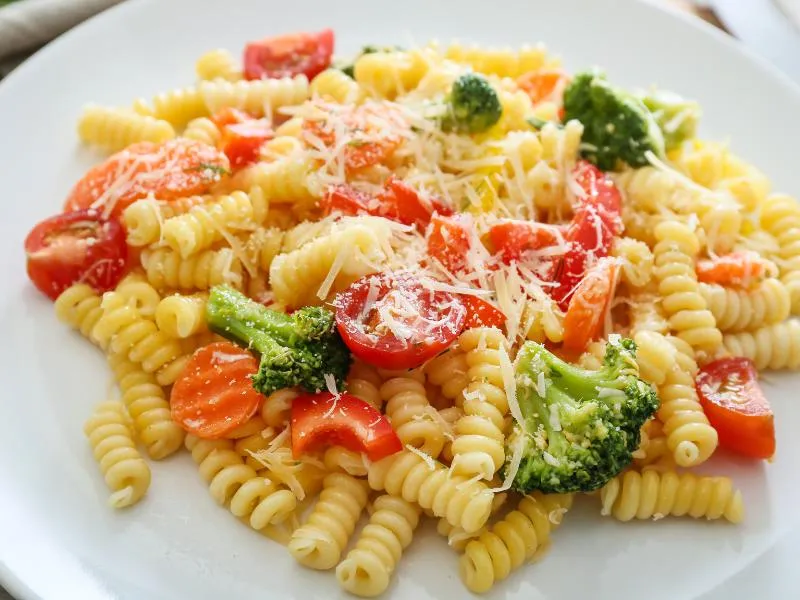Pasta Primavera
Fresh seasonal vegetables and pasta tossed in a light sauce with herbs and Parmesan cheese.
👉 View Authentic Recipe 👈
About This Dish
Pasta Primavera has a unique history among Italian dishes, as it was actually created in the United States in the 1970s. The dish is widely credited to chef Sirio Maccioni of Le Cirque restaurant in New York City, who reportedly created it during a trip to Nova Scotia when cooking with available fresh vegetables. The name “primavera” means “spring” in Italian, highlighting the dish’s celebration of fresh, seasonal produce.
The essence of Pasta Primavera lies in its vibrant mixture of crisp, colorful vegetables—typically including bell peppers, broccoli, carrots, peas, and zucchini—paired with pasta and dressed in a light sauce that may include butter, olive oil, cream, and Parmesan cheese. Fresh herbs like basil or parsley are essential to brighten the flavors. While fettuccine was originally used, the dish is now commonly prepared with various pasta shapes including penne, farfalle, or spaghetti.
Though not authentically Italian in origin, Pasta Primavera has been embraced as an Italian-American classic and exemplifies the 1970s-80s trend toward lighter, vegetable-forward dishes in fine dining. Its popularity surged as Americans began seeking fresher, less meat-centric dishes, and it has since evolved with countless variations while maintaining its core identity as a celebration of seasonal vegetables.
🧑🍳 Analyzed by CucinaBot
Why This Dish Works
Pasta Primavera succeeds through balanced contrasts: the starchy pasta provides a neutral base that carries the bright flavors of the vegetables. The brief cooking of vegetables preserves their natural sweetness and crisp texture, while the light sauce—typically containing fat (butter/oil) and umami (Parmesan)—creates a flavor bridge between the pasta and vegetables. This combination activates multiple taste receptors simultaneously without overwhelming the palate.
Key Success Factors
- Vegetable Cooking Technique: Vegetables should be cooked to crisp-tender, maintaining bright colors and texture contrast with the pasta
- Pasta Al Dente: Slightly firm pasta provides the ideal texture foundation and prevents the dish from becoming mushy
- Sauce Balance: The sauce should coat ingredients lightly, not drown them—just enough to unify flavors
- Proper Seasoning: Abundant salt in the pasta water and judicious seasoning throughout layers flavor effectively
Common Pitfalls
Many home cooks over-complicate Pasta Primavera by using too many vegetable varieties or drowning the dish in heavy cream sauce, which obscures the fresh vegetable flavors that define the dish. Another common mistake is overcooking the vegetables, resulting in a mushy texture and dull colors that diminish both the visual appeal and the contrasting textures that make this dish special.
How to Judge Authenticity
When reviewing recipes, look for these markers of authenticity:
- Vegetables maintain distinct textures and bright colors (not overcooked)
- Sauce is light and elegant, not overwhelming the vegetables
- Uses seasonal vegetables rather than a fixed combination
- Includes real Parmigiano-Reggiano or similar quality cheese
- Finishes with fresh herbs added at the last moment